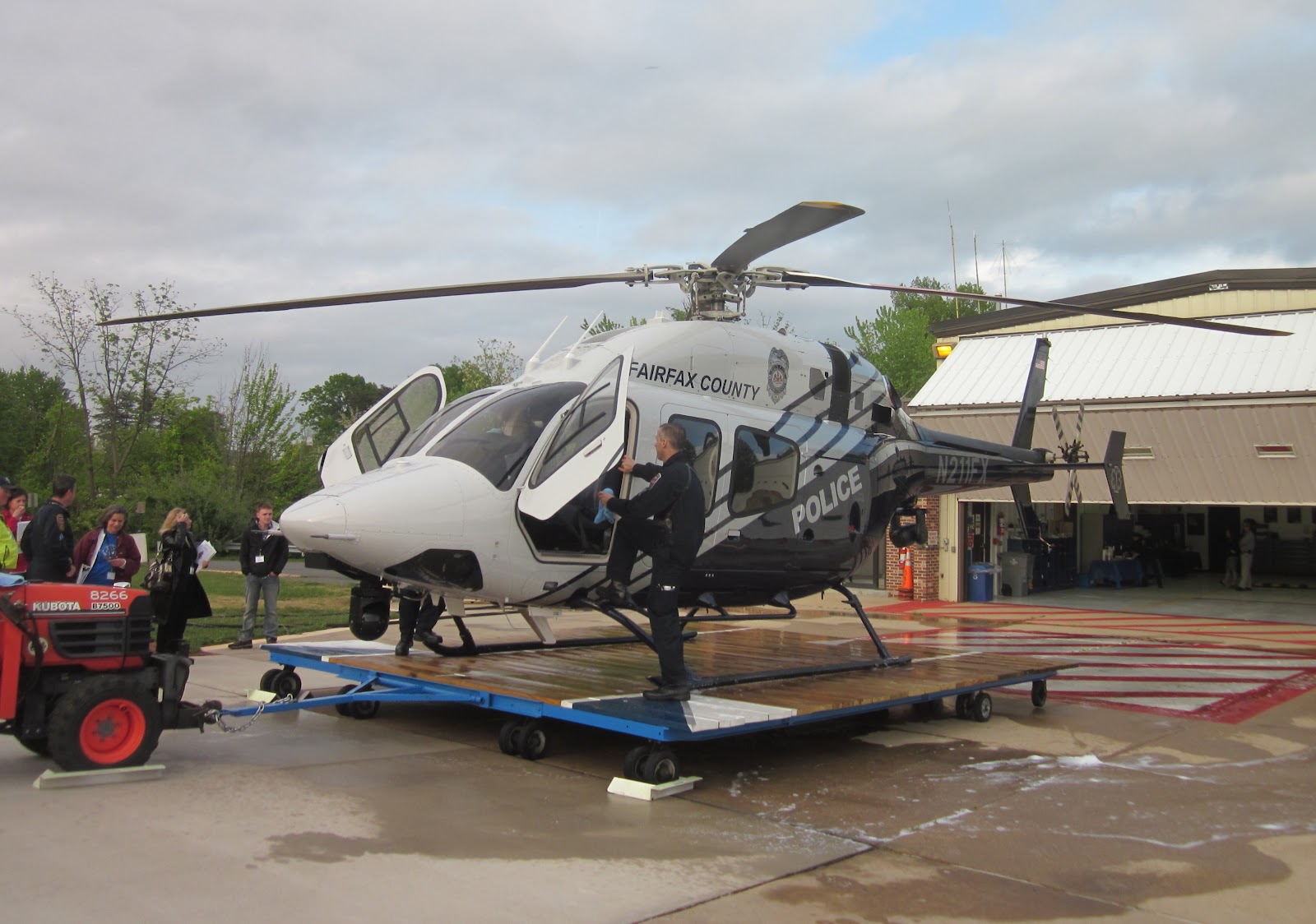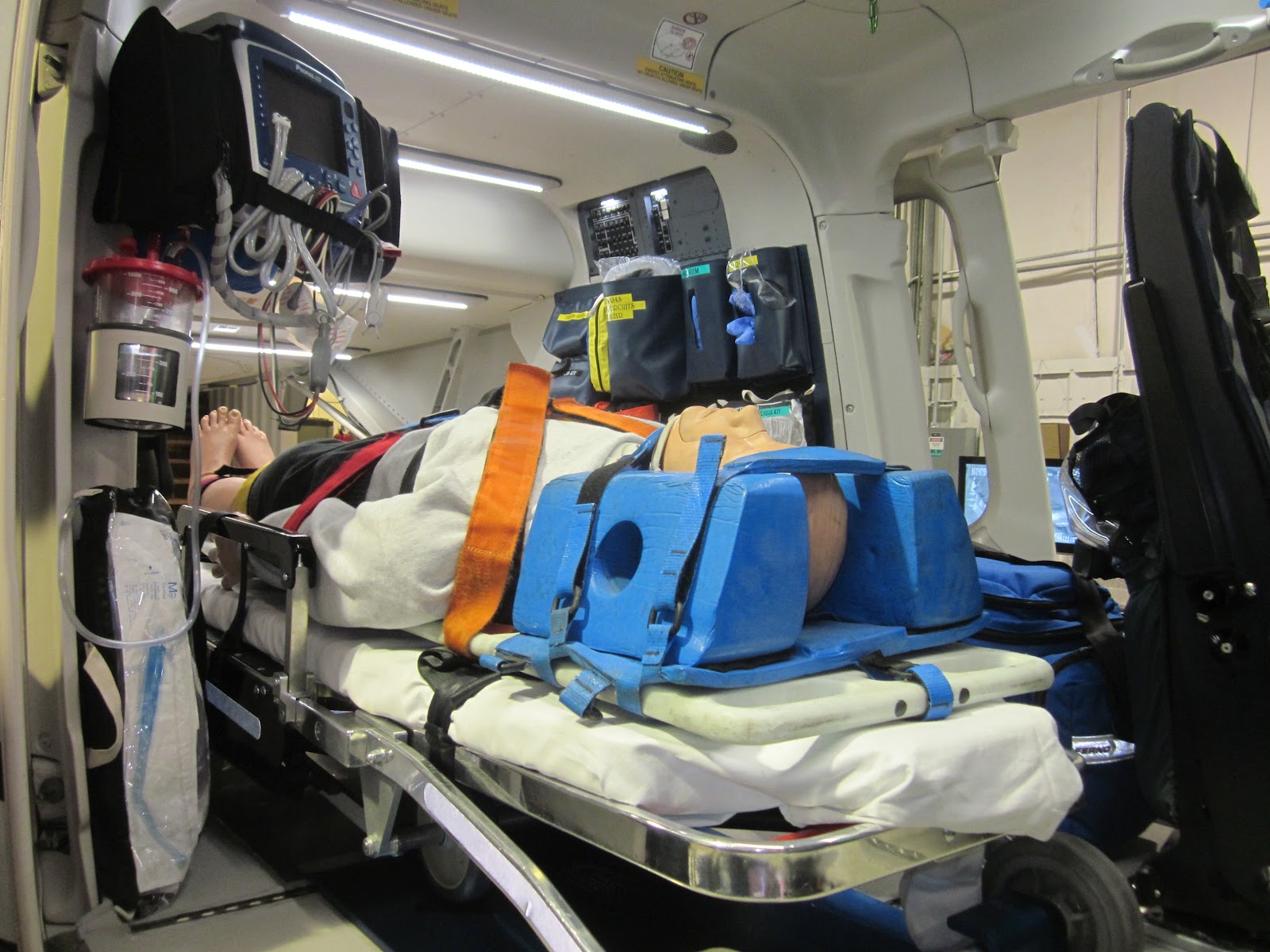Cop school: the Helicopter Division

You might have heard a big commotion in Lincolnia about a
week ago. A drunk driver crashed an SUV into the gas pumps at the Sunoco
station on Little River Turnpike and Beauregard Street and fled the scene. She
was eventually located and arrested for hit-and-run among other charges.
week ago. A drunk driver crashed an SUV into the gas pumps at the Sunoco
station on Little River Turnpike and Beauregard Street and fled the scene. She
was eventually located and arrested for hit-and-run among other charges.
“Fairfax 1,” the Fairfax County Police Department’s
helicopter, played a big role in apprehending the driver. Next time, you notice
a police chopper in the sky, chances are it’s chasing a robbery suspect,
investigating a suspicious noise, searching for a missing child, or carrying out some other crime-related mission.
helicopter, played a big role in apprehending the driver. Next time, you notice
a police chopper in the sky, chances are it’s chasing a robbery suspect,
investigating a suspicious noise, searching for a missing child, or carrying out some other crime-related mission.
 |
| A manikin in the helicopter is used for training. |
About 80 percent of the 3,000 missions undertaken by the
helicopters are police work, Master Police Officer Paul DeHaven, a senior flight officer and tactical paramedic, told
participants in the Fairfax County Citizens Police Academy at our April 26 session. We visited the heliport, on West Ox Road in Fairfax, and had a look
inside the chopper, but unfortunately, we didn’t get a ride.
helicopters are police work, Master Police Officer Paul DeHaven, a senior flight officer and tactical paramedic, told
participants in the Fairfax County Citizens Police Academy at our April 26 session. We visited the heliport, on West Ox Road in Fairfax, and had a look
inside the chopper, but unfortunately, we didn’t get a ride.
Ten percent of the helicopter missions are medevac flights,
and 10 percent are various other assignments, such as taking part in a deer
census or searching for ostriches that escaped from a farm.
The police department has two Bell 429s, one of which has just been
purchased and will be delivered in May. They can go faster—over 180 mph—and are
roomier than the Bell Rangers the police previously used. They have an open
cabin configuration with room for two stretchers.
purchased and will be delivered in May. They can go faster—over 180 mph—and are
roomier than the Bell Rangers the police previously used. They have an open
cabin configuration with room for two stretchers.
Using a helicopter is much more efficient for certain types
of police work. “With a helicopter, we
can clear five acres of woods in a few minutes,” DeHaven says, while it would
take patrol officers hours on foot.
of police work. “With a helicopter, we
can clear five acres of woods in a few minutes,” DeHaven says, while it would
take patrol officers hours on foot.
 |
| MPO Paul DeHaven |
In one incident, police in a helicopter discovered a gang
rape in progress in a park, he recalls. In another mission, the helicopter was
used to confirm that marijuana was growing on a property. The police had
suspected it was there, but a fence blocked the view from the ground. By detecting
the plants from the air, the police were able to show probable cause, which
they needed for a search warrant.
rape in progress in a park, he recalls. In another mission, the helicopter was
used to confirm that marijuana was growing on a property. The police had
suspected it was there, but a fence blocked the view from the ground. By detecting
the plants from the air, the police were able to show probable cause, which
they needed for a search warrant.
Marijuana growers might think they are safe from the police when
they cultivate it indoors, but a thermal imaging camera in the helicopter can detect
their high-powered grow lights. The helicopters also use infrared
technology, rather than a bright spotlight, to detect a body or a suspect hiding in the woods.
they cultivate it indoors, but a thermal imaging camera in the helicopter can detect
their high-powered grow lights. The helicopters also use infrared
technology, rather than a bright spotlight, to detect a body or a suspect hiding in the woods.
The helicopters support SWAT teams during hostage and
barricade situations, support the dive team in body recovery operations, and
provide medical support to the civil disturbance unit. In 2002, when the region
was terrorized by the snipers, two full-time SWAT officers were assigned to the
helicopter division for tactical response missions.
barricade situations, support the dive team in body recovery operations, and
provide medical support to the civil disturbance unit. In 2002, when the region
was terrorized by the snipers, two full-time SWAT officers were assigned to the
helicopter division for tactical response missions.
There are fewer medevac missions than there used to be, DeHaven
says, because cars are safer, which means there are fewer collisions, and
because there is less building going on, so there are fewer construction-related
accidents.
says, because cars are safer, which means there are fewer collisions, and
because there is less building going on, so there are fewer construction-related
accidents.
Still, the police serve as the primary medevac provider in
Fairfax County, DeHaven says. If you’re “lucky” enough to be rescued by the
police helicopter, there is no charge, while the INOVA hospital system charges $12,000 for a helicopter
ride. That’s because “a lot of people we pick up are indigents,
like a homeless person who walks out into traffic,” he says, and it’s not
cost-effective for the police to go through the paperwork to get reimbursed.
Fairfax County, DeHaven says. If you’re “lucky” enough to be rescued by the
police helicopter, there is no charge, while the INOVA hospital system charges $12,000 for a helicopter
ride. That’s because “a lot of people we pick up are indigents,
like a homeless person who walks out into traffic,” he says, and it’s not
cost-effective for the police to go through the paperwork to get reimbursed.

The goal for medevac missions is to land, carry out critical
interventions, and take off in less than 10 minutes, DeHaven said. EMTs can use a
cinch collar to haul people up during a water rescue or a basket to
scoop up people who are incapacitated.
interventions, and take off in less than 10 minutes, DeHaven said. EMTs can use a
cinch collar to haul people up during a water rescue or a basket to
scoop up people who are incapacitated.
The helicopter division includes 11 flight officers who are
sworn police officers trained as EMTs, six pilots, one commander, and two
full-time mechanics. They also work closely with three medical directors,
including an anesthesiologist.
sworn police officers trained as EMTs, six pilots, one commander, and two
full-time mechanics. They also work closely with three medical directors,
including an anesthesiologist.
To be a flight officer, you need to have completed two years
of service in the Fairfax County Police Department; you must be nationally and
state-certified as a paramedic and in basic life trauma support, advanced
cardiac life support, and pediatric advanced life support; have a commercial
license to pilot a helicopter; 1,000 hours of flight time; and a class II or
higher medical certification from the Federal Aviation Administration.
of service in the Fairfax County Police Department; you must be nationally and
state-certified as a paramedic and in basic life trauma support, advanced
cardiac life support, and pediatric advanced life support; have a commercial
license to pilot a helicopter; 1,000 hours of flight time; and a class II or
higher medical certification from the Federal Aviation Administration.
If that’s the career path you want, you have to be really
motivated: Each hour of flight time costs a couple of hundred dollars and takes
three or four hours, including preparation and post-flight paperwork.
motivated: Each hour of flight time costs a couple of hundred dollars and takes
three or four hours, including preparation and post-flight paperwork.

